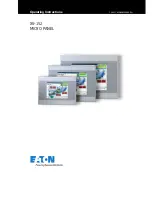
Safety instructions
3
1
Safety instructions
1.1
Possible dangers
Danger!
Never point the operational device at other persons.
Danger due to high pressure!
Danger of burns!
The nozzle and melted hot melt adhesive can reach temperatures over 200°C. Wear heat
protection gloves whenever contact is unavoidable.
Danger due to vapours!
PU hot melt adhesives give off harmful vapours (isocyanates) even when applied in
accordance with instructions. If the prescribed processing temperature is exceeded for a
longer period, harmful decomposition products will develop.
For your safety, please observe the following notes:
• Make sure there is sufficient ventilation (S statement 51).
• Do not inhale vapours and atomised sprays (S statement 23).
• Do not smoke, eat or drink during work (S statement 20/21).
Measures for First Aid
After skin contact:
Cool the affected areas immediately with plenty of cold
water.
After contact with eyes:
Rinse your eyes immediately with running water for
several minutes. Have a doctor remove the cooled adhe-
sive.
If nauseous after inhaling va-
pours:
Provide fresh air. For persistent malaise, consult a doc-
tor.
After swallowing:
For persistent malaise, consult a doctor.
1.2
Notes on safe operation
To avoid functional disruptions and faulty operation, comply exactly with the following
notes at all times:
• The maximum permissible operating pressure of the hot melt adhesive (80 bar) must
never be exceeded.
• Remove combustible or heat-sensitive objects out of the range of the nozzle.
• Protect the device from moisture and wetness (protection from electric shock).
• Comply with the processing data sheet of the hot melt adhesive (protection from pro-
cessing errors).
• Disconnect the power supply (plug-in connection at heatable hose) before every en-
gagement at the device (maintenance, cleaning).
• Allow the device to cool off completely before storage.
• Should you become aware of damage to the device or to the supply leads, disconnect
the device from the power supply immediately. Have the device inspected immediately
by a specialist. It may only be put back into operation after proper repairs (see chapters
6 and 7).
FCH0479-2XM_EN_191107.indd 3
07.11.19 14:03
































